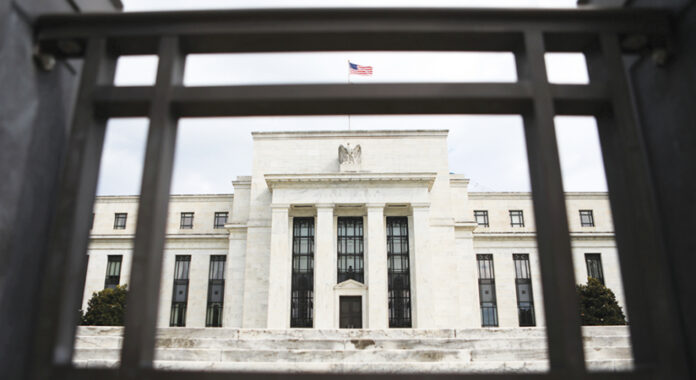THE FEDERAL RESERVE’S new outlook for interest rates ricocheted through Asian markets as the dollar and Treasury yields surged, easing pressure on some of the region’s biggest central banks and complicating the outlook for others.
Expectations for higher US rates tend to suck capital away from Asia, sending local currencies lower and borrowing costs higher. That may be a boon for the likes of the People’s Bank of China and Bank of Japan as it stems unwanted currency gains. But central banks in emerging economies such as India and Indonesia may rue a constraint on their scope to ease policy.
“If dollar appreciation continues, it also exerts pressure on Asian central banks,” said Teresa Kong, a portfolio manager at Matthews International Capital Management LLC in San Francisco. “I see the Fed’s statement today as leaving emerging market central banks with less policy flexibility, shifting probabilities to higher rates to temper inflation even though their economies may benefit from lower rates for longer.”
The dollar rallied the most in a year in the wake of the Fed meeting, disproportionately hitting Asia markets, based on a gauge of risk-adjusted moves. The Philippine peso, Indonesian rupiah and South Korean won were among the largest underperformers since the policy announcement, as measured by the three-month z-score, which tracks the swings relative to the mean.
At the same time, a sharp sell-off in Treasuries weighed heavily on developed market bonds. New Zealand’s and Australia’s 10-year yields jumped on bullish local data and bets the Fed’s new twist will allow room for others to shift tone without risking too much currency strength.
PRICE PRESSURES
Markets price a good chance for a Fed rate hike by late 2022 — and overnight swap markets shifted to price in close to 50 basis points (bps) of tightening by New Zealand’s central bank by the end of 2022, compared with around 32 bps on Tuesday.
“We are looking at regional central banks here in Asia and debating which one could move earlier than projections and some of that could be moving ahead of the Fed,” Stephen Chang, a Hong Kong-based portfolio manager at Pacific Investment Management Co. told Bloomberg Television. He cited the Bank of Korea and Australia as possible candidates for a sooner-than-anticipated move.
In a speech Thursday, Reserve Bank of Australia (RBA) Governor Philip Lowe said requirements for raising the benchmark interest rate could be met in 2024 in some of the scenarios the bank has reviewed, but not in others. The RBA will look at the scenarios again at its meeting next month. Soon after he wrapped up, May labor force data showed a surprising jolt lower in the jobless rate to 5.1%.
Bank Indonesia Governor Perry Warjiyo, who held rates steady on Thursday for a fourth straight month, said the reaction to the Fed’s move so far appears to be relatively stable, though he added the bank remains on watch.
“We will continue to be vigilant and ensure the stability of exchange rates and financial markets,” he told reporters after announcing the bank’s policy decision.
BIG TAILWIND
For the Bank of Japan (BoJ), which meets on Friday, the Fed’s move may offer some reprieve, said Tomo Kinoshita, global market strategist at Invesco Asset Management in Tokyo.
“The Fed is sending a big tailwind for the BoJ by adding pressure for the yen to weaken,” Mr. Kinoshita said. “All the BoJ has to do is to stick with what they have been doing for a distant inflation target.”
As for the PBOC, it will likely welcome the Fed’s shift too as it grapples with yuan strength, surging inflows of capital and sky-high commodities prices. The central bank has been vocal in warning against expectations for ongoing yuan appreciation.
China’s stock benchmark CSI 300 Index rose as much as 0.8%, the best performer among major Asian equity gauges.
Fed officials sped up their expected pace of policy tightening amid optimism about the labor market and heightened concerns for inflation, and released forecasts that show they anticipate two interest-rate increases by the end of 2023 — sooner than many thought.
Fed Chair Jerome Powell told a press conference that officials would begin a discussion about scaling back bond purchases used to support financial markets and the economy during the pandemic.
That will have knock-on consequences for Asia and other regions, said Marc Chandler, chief market strategist at Bannockburn Global Forex.
“If US rates really do rise in a sustained fashion and the dollar moves higher, many EM countries will be squeezed, especially where interest rates differentials have been an important support,” he said. — Bloomberg

